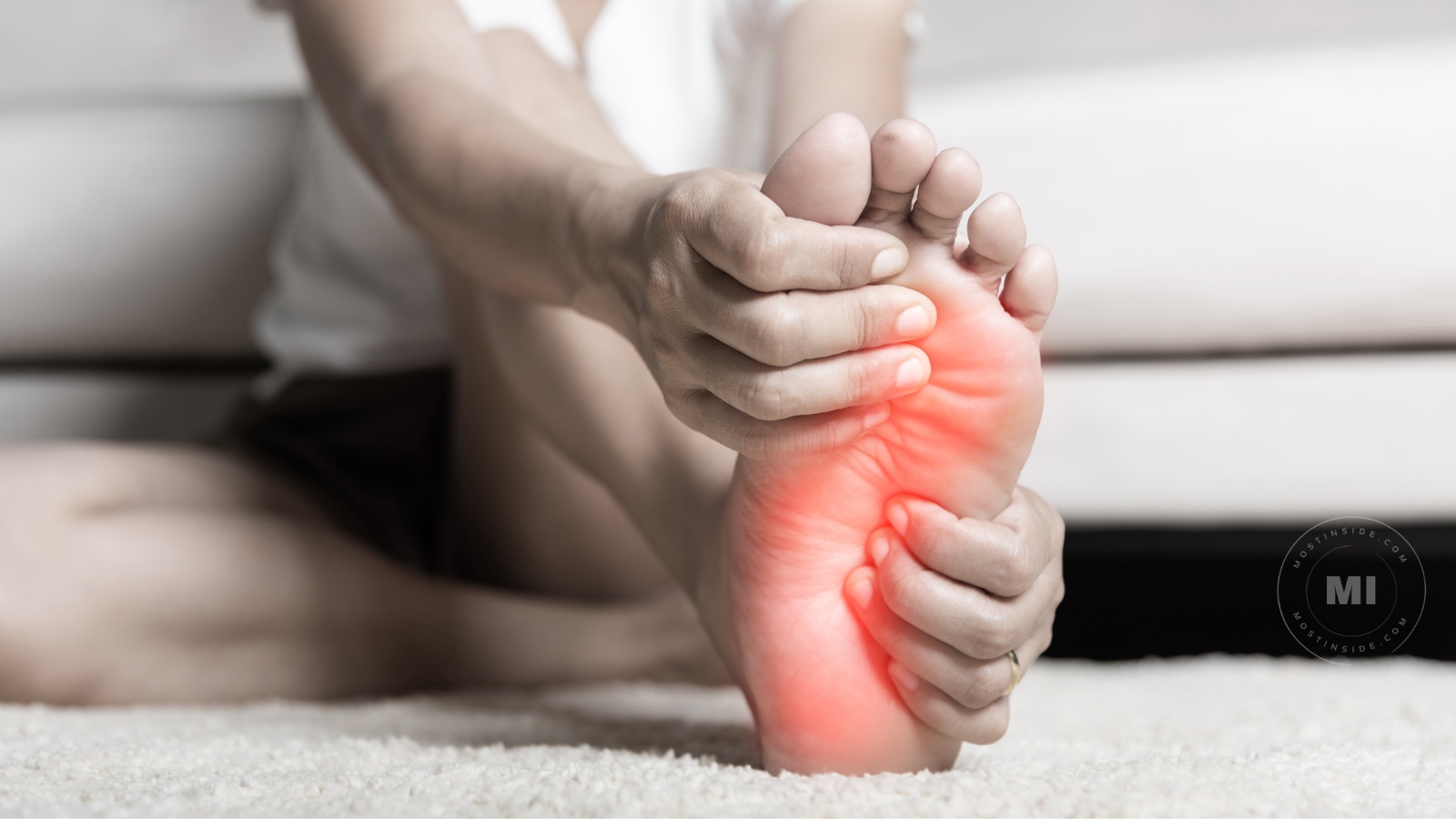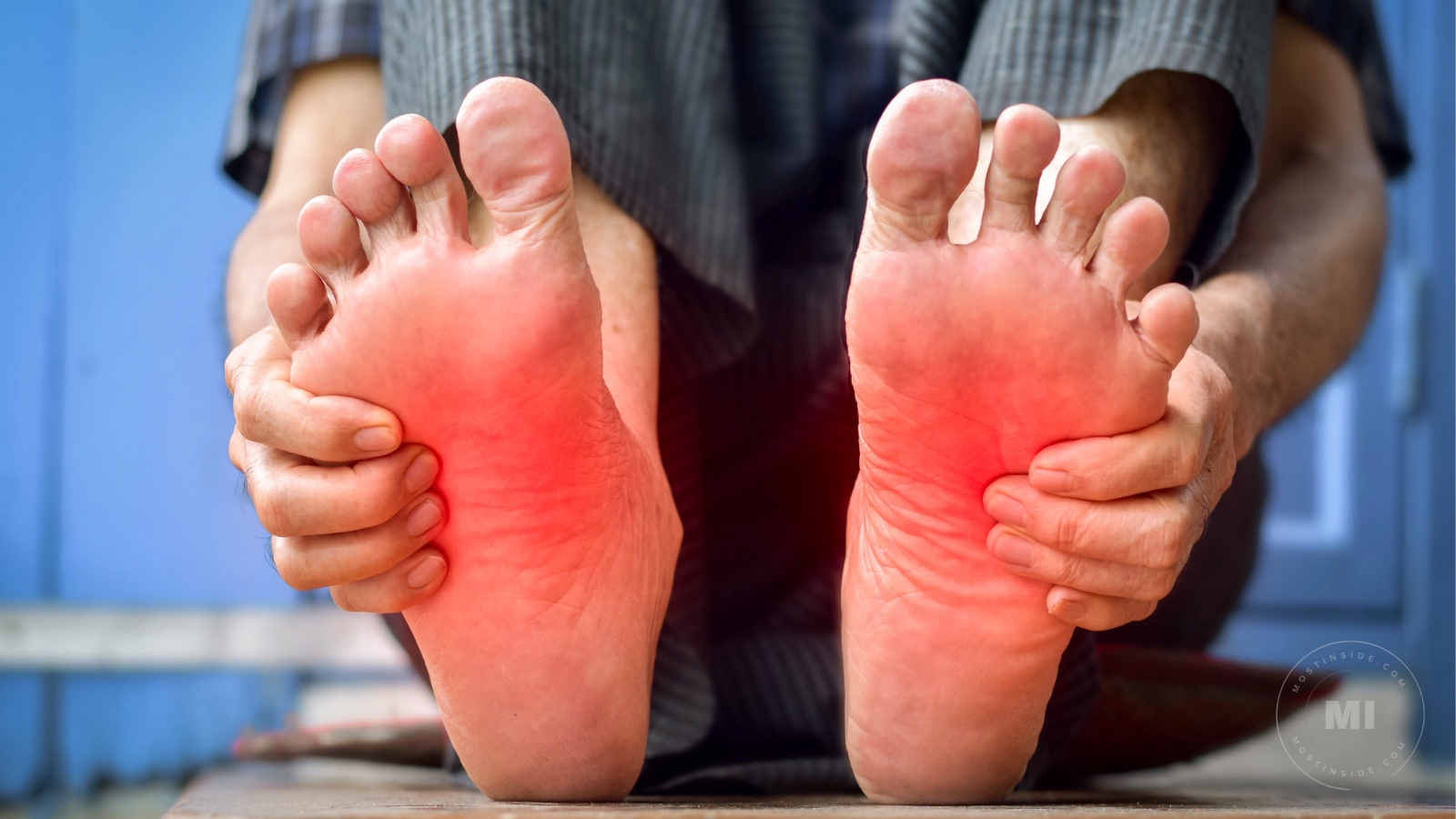10 Foot Problems To Watch Out For In Aging Feet
The feet support your body’s weight, making it prone to regular wear and tear. For this reason, people deal with foot problems frequently as they age. After a lifetime of walking, running, and standing, it’s believed that many develop foot conditions affecting one’s movement and quality of life.

Regular visits to a doctor are necessary to keep your aging feet healthy. For more information about foot problems, visit this site and consult with a licensed podiatrist who specializes in health and age-related issues that affect the lower legs or feet.
As you age, here are the common foot problems you should watch out for:
1. Ingrown Toenails
When the side of your toenails grows into your skin, it’s called an ingrown toenail. It may result in infection, pain, swelling, or nail root removal when not treated correctly. Typically found on your big toe, this foot problem may occur at any age, but it’s common in older people.
To avoid an ingrown toenail, don’t cut your toenails too short, and avoid tight-fitting footwear.
Although you can deal with ingrown toenails through a do-it-yourself (DIY) approach, you should consult your doctor. To avoid infection, see a podiatrist and avoid self-treatment options. Sometimes, nail surgery and nail removal are recommended for serious cases.
2. Hammertoes
Hammertoes refer to the toe’s deformity that resembles a hammer as the joint is stuck in an upward position. This foot ailment may cause difficulty walking and pain. Callus or corn may appear on the joint as well. Without proper treatment, hammertoes may get worse, requiring surgery to treat them.
The good news is that hammertoes can be treated by wearing footwear with a deep-toe box and low heels. And you can do simple exercises, including stretching your toe manually a few times daily and picking up some marbles with your afflicted toe.
If you experience severe pain, consult a podiatrist immediately to get proper treatment and pain relief. When hammertoes can’t be treated non-surgically, surgery may be necessary.
3. Flat Foot
When it comes to aging feet, a flat foot isn’t congenital but acquired as you age. It’s due to damage to your posterior tibial tendon – the primary tendon supporting your foot’s arch. If your tendon has a tear, the arch may collapse as your posterior tibial tendon unravels and weakens.
Luckily, there are several treatments for flat feet. Some of these may include the following:
- Foot Support
One of the ways to deal with a flat foot is to wear proper foot support, referred to as orthotics. It provides proper arch support to fix the issue. Foot support can support your foot’s ball or heel to boost your condition further as well.
- Exercises
Another common treatment for the flat foot is simple exercises like heel cord stretches. You can do this by facing the wall and placing both hands at eye level. Then, position your legs that need stretching a step away from your other foot. You may bend your front leg’s knee until you feel your back leg is stretching. Don’t arch your foot; hold that position for at least 30 seconds.
- Surgery And Medication
Your podiatrist may prescribe medications to control the swelling and pain due to a flat foot. Often, surgery is the last resort when managing flat feet.
These are some of the treatments you may consider for flat feet. If you want other options, you may seek massages and chiropractic treatments to manage discomfort and pain as well. Nevertheless, make sure to consult your podiatrist first before you opt for any treatment.
4. Morton’s Neuroma
When you have Morton’s neuroma, you might feel as if you’re standing on a fold in your sock or a marble in your shoe. It’s a painful and common foot condition that affects your foot’s ball, typically between your third and fourth toes.
Additionally, Morton’s neuroma involves thickening tissue around the nerves leading to your toes. It may cause pain around your foot’s ball. The affected toes may experience numbness, stinging, and burning sensation.
Morton’s neuroma may happen in response to pressure, injury, or irritation to a nerve leading to your toes. Some of the factors that contribute to this foot problem include:
- Foot Deformities: People with hammertoes, bunions, flat feet, and hammertoes are at risk of Morton’s neuroma.
- Inappropriate Footwear: Ill-fitting shoes or high heels may put extra pressure on your foot’s ball and toes.
- Sports Or High-Impact Activities: Participating in various athletic activities, such as running or jogging, may cause trauma to your feet repetitively. Sports that require tight shoes, such as rock climbing or snow skiing, may also put pressure on your feet.
The treatments for Morton’s neuroma may include rest, surgery, injections, stretching, or physical therapy. When you experience foot pain or burning sensation around your foot, see a podiatrist to determine what causes stress to your feet.
5. Calluses
These are often due to excessive friction or pressure on your foot’s bottom part. Ill-fitting footwear is the common culprit for calluses. Wearing sandals or shoes regularly without socks may cause calluses.
When it comes to treatments, calluses can be gently scrapped. Furthermore, you may trim the hard tissue buildup yourself. Wearing supportive and properly fitted shoes with excellent shock-absorbing soles may alleviate pressure on calluses and prevent buildup in the future.
6. Bunions
Bunions usually appear as a bony bump on your foot’s inside edge, where your big toe meets your foot’s innermost bone. These are progressive disorders that start with a leaning big toe. It then changes the bone’s angle over the years and gradually produces a bump that becomes prominent over time. Symptoms typically show at later stages, and others may not experience any symptoms.
Bunions are also due to inherited faulty foot mechanical structure. Particular foot types may make an individual prone to experiencing bunions. While wearing tight shoes doesn’t cause bunions, these can make the deformity worse. Thus, symptoms may appear sooner.
In several cases, bunions only require proper observations. To lessen the chance of joint damage, it’s necessary to consult a foot doctor for periodic evaluation.
If treatment is needed, doctors may provide various options, such as:
- Padding: The pads placed over the bunion’s area may help reduce pain. These may be acquired from your physician or bought at drug stores.
- Footwear Changes: Wearing the proper types of shoes is essential. Opt for shoes with a wide toe box and avoid high heels or footwear with pointed toes, as they may aggravate a bunion.
- Orthotic Devices: A podiatrist may recommend you wear a custom orthotic device.
- Medications: Oral medications may be recommended to relieve pain and reduce inflammation.
If the abovementioned non-surgical treatments aren’t effective, your podiatrist may suggest surgery. Some surgical procedures are available to treat bunions. These procedures can help correct the changes in your foot structure and repair tissue changes. The primary goal of surgery is to reduce deformity and pain caused by bunions.
7. Foot Ulcers
Another foot problem to watch out for in aging feet is foot ulcers. People with diabetes are at risk of this foot problem. It forms due to skin tissues breaking down and exposing layers underneath. It’s common under your big toes and may affect your foot’s bones.
Every person who has diabetes may develop foot ulcers over time. Nonetheless, proper foot care may help prevent them. In terms of treatments, they vary depending on the cause of foot ulcers. Before you try any treatment, consult your doctor to ensure it isn’t a serious problem. It’s because infected ulcers may lead to amputation when neglected.
8. Corns
Compared to calluses, corns form on the top of the toes or feet over the joint or bone. They’re thick and typically dense. And they may cause discomfort and make running or walking with shoes uncomfortable.
Corns are due to prolonged friction from ill-fitting shoes that rub the sole. They may form as people gain extra weight as well, which may cause the excess skin to build up along your feet.
There are various kinds of corn, but some can be treated similarly. The treatment options include wearing proper footwear to reduce pressure on the toe and redistribute weight. You can apply ointments to corn too. When such methods fail, surgery may be necessary to remove the corns.
9. Cracked Heels
Although cracked heels don’t cause serious problems, they may lead to serious issues when left untreated. Severely cracked heels may get infected or result in cellulitis, which is a skin infection.
Cracked heels may start once your heels become thick and dry. Extra pressure on a fat pad may also cause thick and dry skin to form heel fissures or cracks. While anyone may suffer from heel fissures, other things can make them more likely, such as standing for extended periods and using harsh soaps.
Regardless of what caused your cracked heels, there are some ways to treat them. For example, you can give your feet extra care by moisturizing them regularly. Use thick moisturizers or those that contain skin-softening agents to remove dead skin.
If your heels don’t improve after trying various methods or they’re severely cracked, consult your doctor immediately. Often, you may need to see a podiatrist to get the right treatment.
10. Plantar Fasciitis
One of the common foot problems in aging feet is plantar fasciitis. It happens when your plantar fascia ligaments experience excessive wear and tear regularly. Too much foot pressure may tear or damage ligaments. When that happens, it becomes inflamed, resulting in stiffness and heel pain.
Home treatments, such as icing, rest, and anti-inflammatory medications, are some ways to deal with plantar fasciitis and manage discomfort and foot pain. If such treatments don’t ease the pain, a doctor may inject a corticosteroid into your heel’s skin or foot’s arch.

Ways To Take Care Of Your Aging Feet
Regardless of your lifestyle, taking care of your aging feet is critical. It’s because once they’re injured, their overall health is also affected. Having foot problems may hinder your ability to do your daily chores and reduce your willingness to do other things you want to accomplish.
Fortunately, there are many ways to care for your aging feet. If you don’t know where to start, keep the following in mind:
-
Enjoy A Relaxing Soak Regularly
After a tiring day at work, pamper your feet by enjoying a relaxing soak. You can add a few drops of essential oils to warm water. Soak your feet for several minutes and dry them using a soft towel.
-
Moisturize Your Feet
Your skin may become thinner and drier as you age. After a shower or bath, be sure to moisturize your foot skin with a lotion or any moisturizing cream. For rough spots, you can use a good quality exfoliating foot scrub.
-
Wear Proper Footwear
Your feet may become wider and longer as you get older. So, each time you shop for proper footwear, recheck your size. Aside from the size, you may need to invest in footwear with more support and avoid wearing footwear with high heels too.
-
Care For Your Toenails
Another way to care for your aging feet is to keep your toenails in good shape. Trim them to keep the edges aligned. Since nails can be brittle as you age, they’re much easier to trim after soaking. Make sure to cut your toenails straight across to avoid ingrown toenails.
-
Invest In Foot Orthoses
Foot orthoses are the kinds of specialized inserts placed in your shoe. These can be anything from custom-made devices prescribed by podiatrists and over-the-counter (OTC) adhesive pads.
Foot orthoses help lessen fall risk and foot pain by adjusting the force that affects your feet while standing or walking. Talk to a podiatrist before you consider foot orthoses.
-
Consider Regular Check-Ups
Particular conditions associated with your foot and signs of deterioration can be subtle. Prevention is always the best protection. Getting your condition treated and assessed before it progresses is critical to good quality of life.
-
Don’t Ignore The Pain
Your feet must not be in pain, regardless of how you’ve put your feet throughout the years. Remember that having sore feet isn’t a normal part of aging. Once you experience pain, don’t ignore it and contact a podiatrist to schedule a consultation quickly.
Wrapping Up
Foot problems may affect anyone, causing discomfort and pain. While other foot problems are associated with several medical conditions, such as gout or arthritis, some issues can be due to injuries. Regardless of the foot problems you often encounter, it’s crucial to prioritize proper foot health and consult with a reliable podiatrist regularly.
Recommended For You
Guide To Healthy Sleeping Habits
Most Inside
Most Inside offers high-quality recommendations and valuable updates to enhance all aspects of your life, providing premium guidance and enriching experiences.




